Ghana Petroleum Fund: Prospect and Challenges
Anita Lamptey, Accra
February 24, 2025
In 2011, Ghana passed the Petroleum Revenue Management Act (PRMA). The Act established an umbrella fund called the Petroleum Holding Fund (PHF). In a nutshell, the PHF mimics a sovereign wealth fund. It has three specialized funds: the Ghana Stabilization Fund, the Ghana Heritage Fund, and the Ghana Petroleum Wealth Fund.
In modern finance, the first petroleum fund was the Kuwait Investment Authority in 1953. In 1976, Canada established the Alberta Heritage Savings Trust Fund, followed the same year by the Alaska Permanent Fund (USA). Another example is the Norwegian Government Pension Fund (NGPF) established in 1990. Today, the NGPF remains the largest sovereign (petroleum) found in the world, with US$1.7 trillion of assets under management1. African countries have joined the fray. Gabon, Chad, Angola and Nigeria have established sovereign wealth or petroleum funds to manage their petroleum revenues2. Africa has 20 sovereign wealth funds according to the African Development Bank3.
The Bank of Ghana overseas the funds set up by PRMA, under the supervision of the Ministry of Finance. The PRMA regulates the collection, allocation, and management of petroleum revenue from upstream and midstream petroleum operations. Two other public agencies contribute to the management framework of the funds. Specifically, the Ghana National Petroleum Corporation (GNPC) determines the value of lifting from production fields, while the Ghana Revenue Authority provides data on corporate taxes, royalties, and surface rentals.
Oil and Gas in the economy of Ghana
The extractives sector is vital for the economy of Ghana. It has two sub-sectors: mining and hydrocarbon. Together, they contribute over 95 percent of Ghana’s export and are major contributors to the national growth domestic product (GDP). The Ghana Energy Commission, expects an average daily production of crude oil ( across the three fields), to reach 135,336 barrels per day in 2025. This will represents a slight increase from the previous two years 134,426 barrels/day in 2024 and 129,687 barrels/ day in 2023. But in macroeconomic terms, crude oil production and revenues derived form it have stagnated over the past decades reflecting global price volatility and limited investments in the sector.
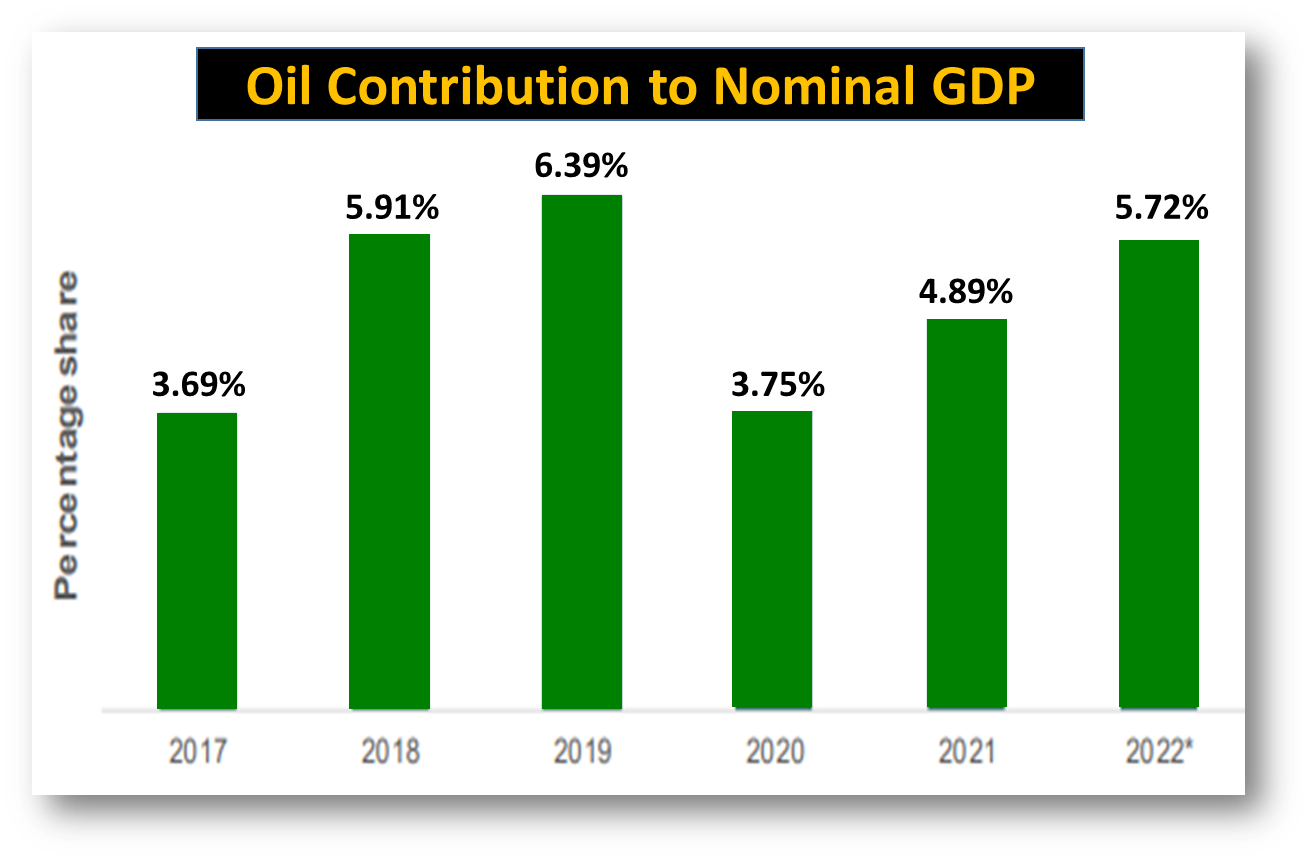
Ghana has three active production fields: The Jubilee field, TEN, and the Sankofa Gye Nyame (SGN). The first barrel of oil from the Jubilee Field came on-stream in December 2010, while TEN and SGN started production in August 2016 and May 2017.
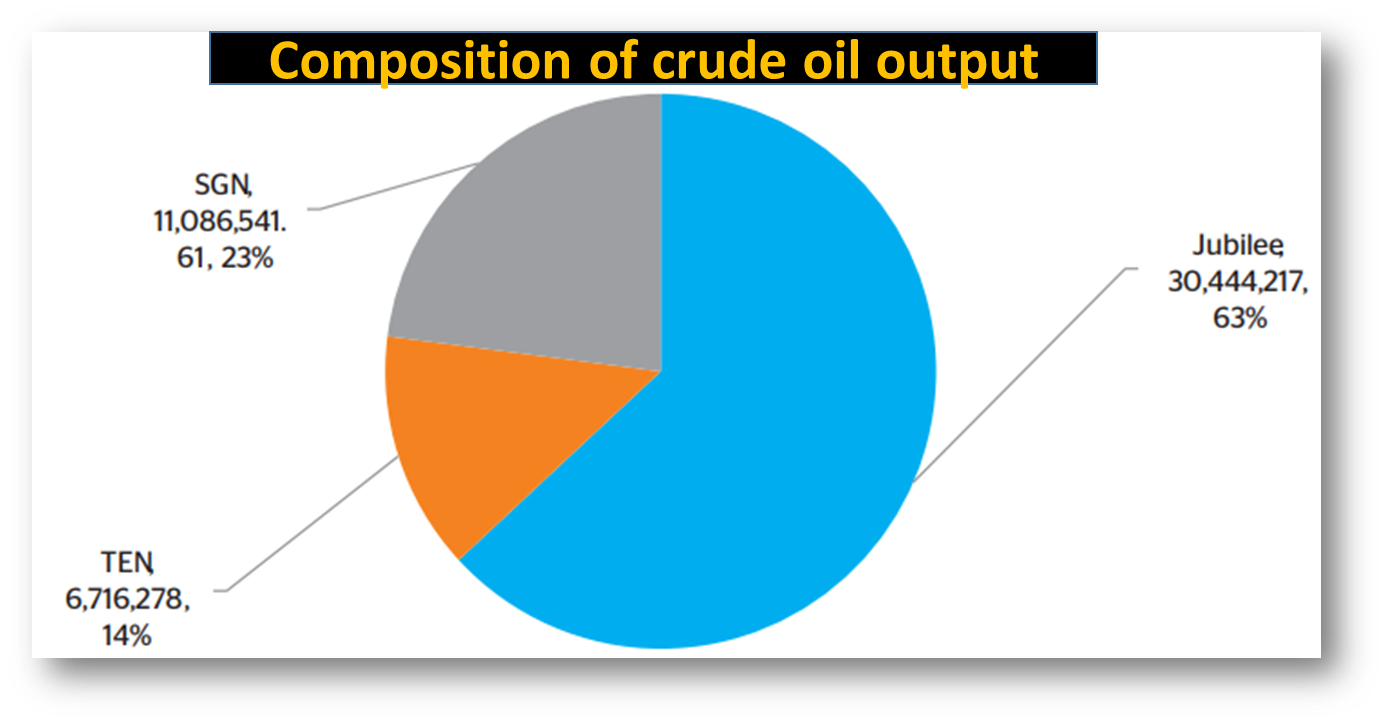
Source: Ministry of Finance, 2023
However, crude oil production has been in a steady decline according to the Public Interest and Accountability Committee (PIAC) 4. In a 2023 report, the PIAC announced that crude oil production declined for the fourth consecutive year in 2023. Production dropped from a high of 71.44 million barrels in 2019 to 48.25 million barrels in 2023, representing an annual average decline of 9.2 percent. A decline in oil production harms oil receipts for the Petroleum Holding Fund.
PRMA framework and institutions
The Petroleum Holding Fund (PHF)
The PHF receives and disburses petroleum revenues to various public institutions. For these operations, the PHF holds an offshore account at the Federal Reserve Bank of New York (This account is called the Bank of Ghana Petroleum Holding Fund Account). The Ghana Petroleum Fund has two sub-funds:
The Ghana Petroleum Funds (GPF)
After two transfers or petroleum revenues to the GNPC and the the ABFA account, the GPF receives thirty (30) percent of the remaining petroleum revenues, which it then splits between the Ghana Stabilization Fund and the Ghana Heritage Fund. The Bank of Ghana invests the proceeds of the GSF and GHF in fixed income instruments. Besides the offshore account at the Federal Reserve Bank of New York, the Bank of Ghana also uses Euroclear (Belgium) as a custodian Bank. At the Federal Reserve Bank of New York, this fund must maintain a minimum balance of 200 million dollars. The performance of the funds depends on the strength of the dollars, the yield on international sovereign bonds and the yield on US T-bills. Oil production levels and oil prices are also key performance factors. The total value of the PHF was US$1.062 billion in 2023 (US$1.444 billion in 2022 and US$809 million in 2021).
Ghana Stabilisation Fund (GSF)
The purpose of the GSF is to cushion the impact on, or sustain, public expenditure capacity, during periods of unanticipated petroleum revenue shortfall. Ghanaian authorities describe the GSF as a fiscal stabilization fund with a short investment horizon. To meet unanticipated withdrawals, the fund’s portfolio contains liquid and low-risk instruments.
Ghana Heritage Fund (GHF)
The Ghana Heritage Fund is a savings fund that aims to grown and increment wealth for future generations of Ghanaian . It has a long investment horizon and a power to take more risk.
The Ghana Petroleum Wealth Fund (GPWF)
A year following the depletion of petroleum reserves and in compliance with Section 20 of the PRMA, the government will merge the GSF and GHF into one fund: the GPWF. The GSF and GHF will cease to exist.

Flow of funds
Revenues from Ghana’s petroleum resources come from from royalties, carried and stockholdings interests and also surface rentals. Other revenues come from royalties, direct stakes of the Government of Ghana, dividends, and taxes.
Allocation
Petroleum Revenue are first placed in the Petroleum Holding Fund. Then, the government redirects part of the funds to the Ghana National Petroleum Corporation (GNPC). Another portion of the funds goes to the Annual Budget Funding Amount (ABFA) to directly finance local development and infrastructure around the country5. The ABFA account receives 70 percent of the remaining funds after the first allocation to the GNPC. ‟The Annual Budget Funding Amount (ABFA) constitutes the main channel through which petroleum revenues are used to support the budget”6. The rest of the funds goes the the GHF and the GSF
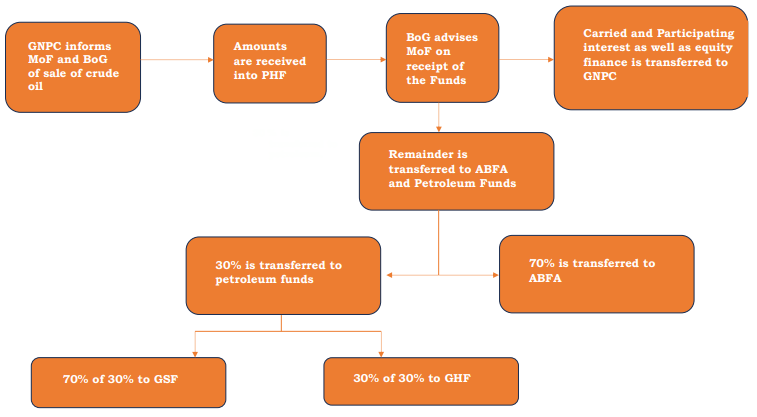
Source: Ghana Audit Service, audit.gov.gh, 2023
Over the past six years, petroleum receipts have fluctuated depending on production and the price on international markets. In 2024, according report from the Ghana, an increase in oil revenue grew the petroleum funds to US$1.4 billion. At the end of the second semester of 2024, the Ghana Petroleum Funds returned a net realised income of US$25.29 million compared to US$18.12 million in H2 2023.
Other data from the Central Bank revealed that the Ghana Stabilisation Fund contributed 19.86 percent or US$5.02 million to total net income compared to US$2.78 million in H2 2023 whilst GHF contributed 80.14 percent or US$20.27 million compared to US$15.33 million in H2 2023. The GPFs reserves at the end of H2 2024 was US$1,455.78 million (GHF was US$1,258.86 million and GSF was US$196.92 million) compared to US$1,236.76 million in H2 2023 (GHF stood at US$1,046.38 million and the GSF at US$190.38 million).
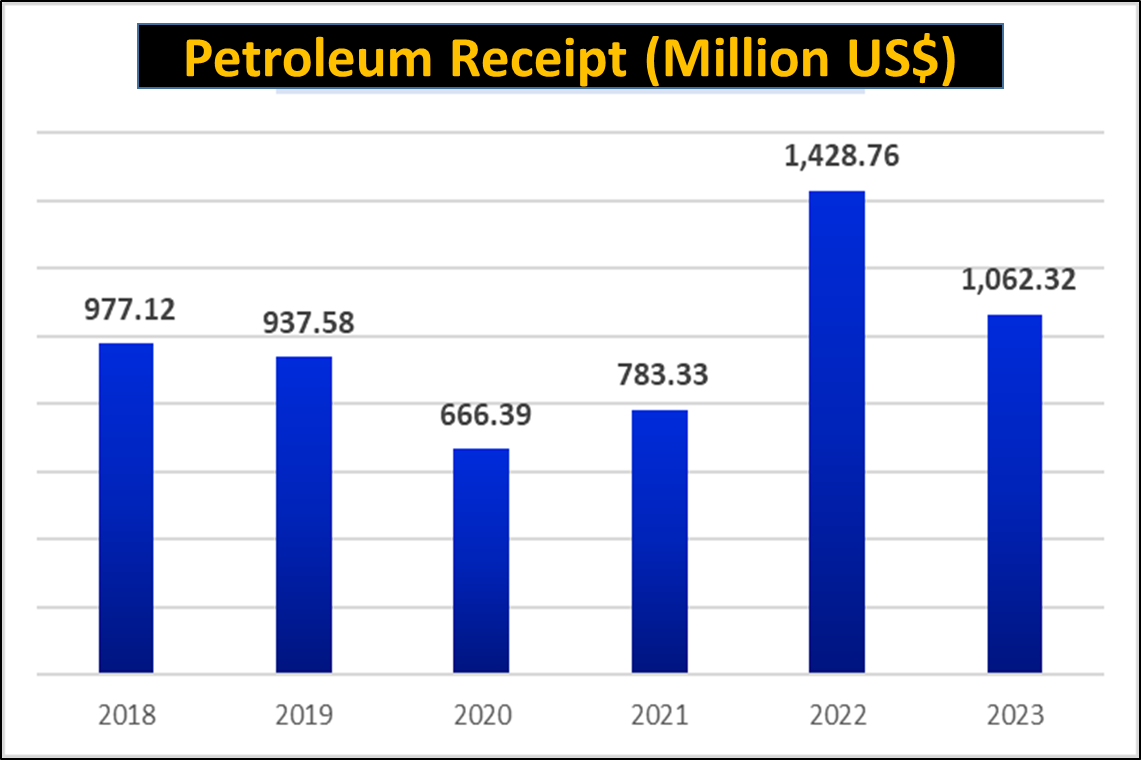
Source: Petroleum receipt, Ministry of Finance
Performance of the two funds
The funds invest in assets of high credit quality with low risk but with a specified rate of return as a target. The portfolio of the Ghana Stabilization Fund (GSF) holds liquid instruments. This fund operates as a hedge against unanticipated petroleum revenue shortfalls. The Ghana Heritage Fund (GHF) invests in a mix of negatively correlated asset classes over the medium to long-term horizon. It aims to reduce risk and maximize the real rate of return. The two portfolio contains short-term money market instruments, such as overnight and call deposits, discount notes, treasury bills, and short-term deposits. The funds also invest in investment grade bonds, certificates of deposit, commercial papers, and medium-term notes.
The Ghana Heritage Fund and Ghana Stabilisation Fund received US$136.20 million and US$317.81 million respectively in H2 2024 compared to US$68.45 million and US$159.72 million respectively received in H2 2023.
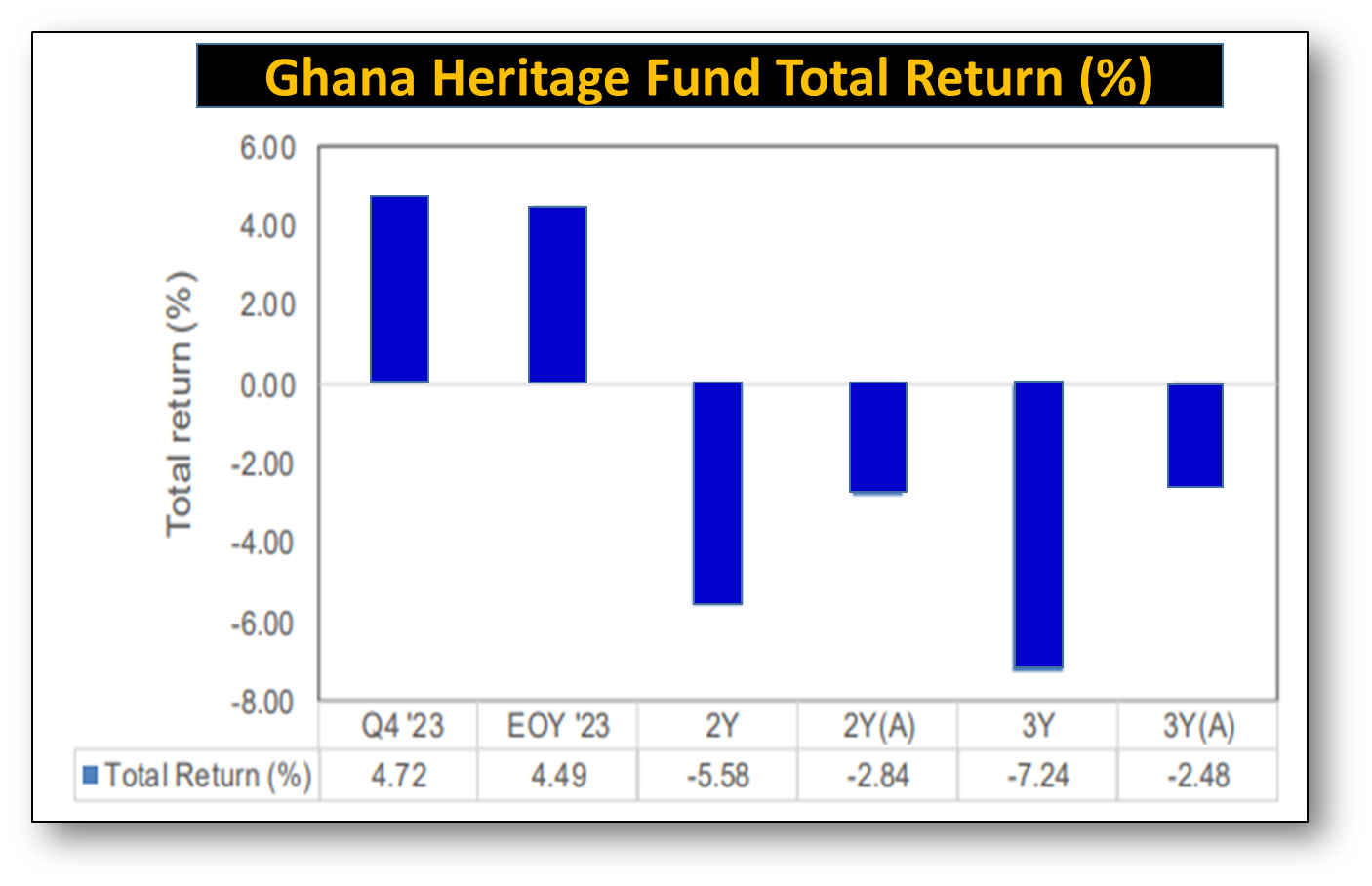
The Ghana Stabilization Fund (GSF) returned 1.56 percent for Q4 2023, and a year to-date return of 4.49 percent. The two-year return was 5.60 percent with the two-year annualized (2Y (A)) return at 2.77 percent.
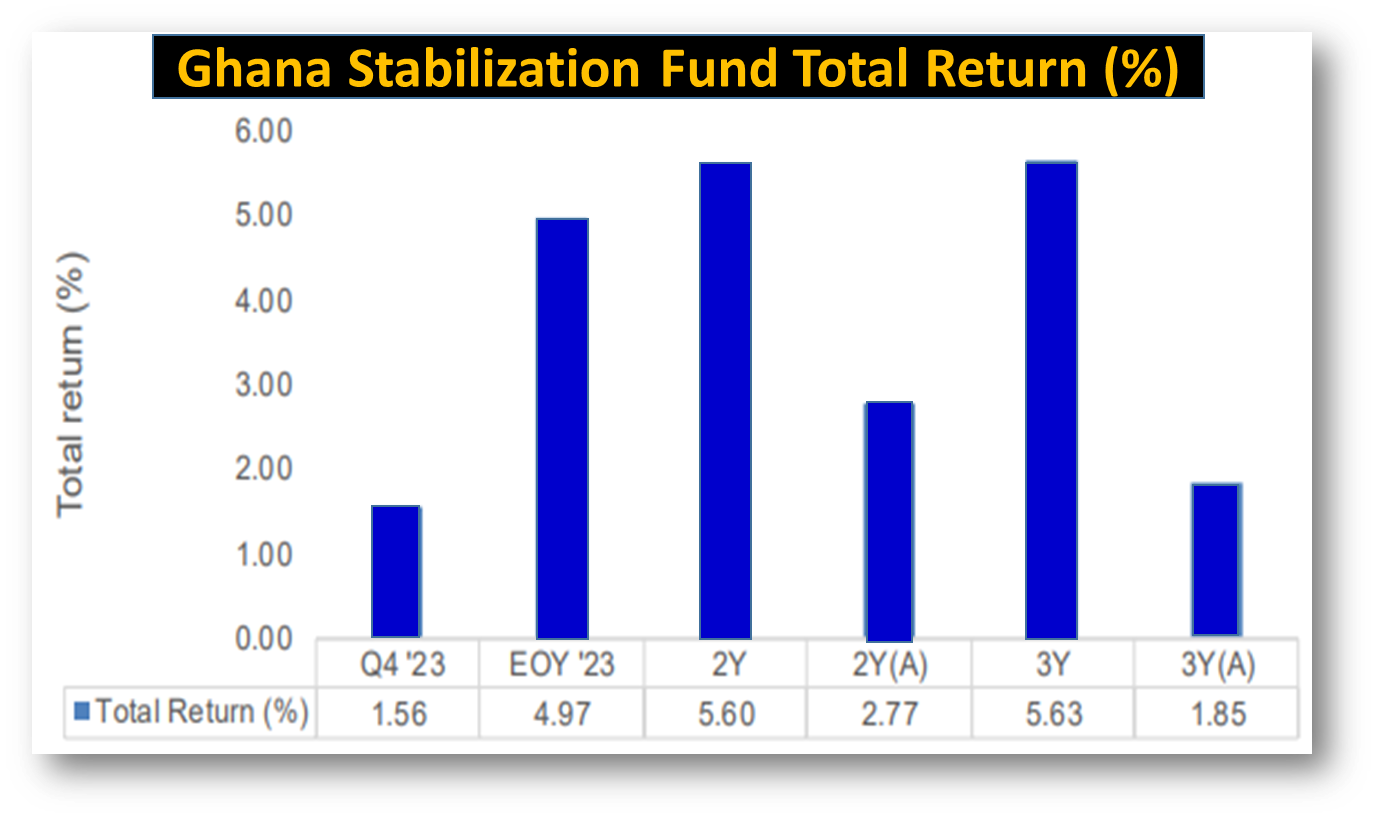
Source: Ministry of Finance (2023)
Total lifting proceeds and other income distributed to ABFA, GNPC, GSF and GHF from inception (2011) to the end of December 2024 amounted to US$11.1 billion. Despite the precautious investment mandates of the funds, the structure of the portfolio exposes them to risks from changes in the US economy.
Related Articles
BIBLIOGRAPHY
1❩ Sovereign Wealth Fund Institute (2025): Rankings by Total Assets - https://www.swfinstitute.org/fund-rankings/sovereign-wealth-fund
2❩ CHR Michelson Institute (2016): https://internationalbudget.org/wp-content/uploads/Chads-Oil-Miracle-or-Mirage.pdf
3❩ African Development Bank (2023): Africa Investment Forum 2023: African sovereign wealth funds, new drivers of development - https://www.afdb.org/en/news-and-events/africa-investment-forum-2023-african-sovereign-wealth-funds-new-drivers-development-65698
4❩ https://www.piacghana.org/ova_doc/communique-addressing-the-declining-crude-oil-production-in-ghana/
5❩ The key priority areas for the ABFA are agriculture, education and health service delivery, roads, rails and other critical infrastructure and industrialization.
6❩ https://www.piacghana.org/wp-content/uploads/2023/06/simplified_guide_to_ghanas_petroleum.pdf
